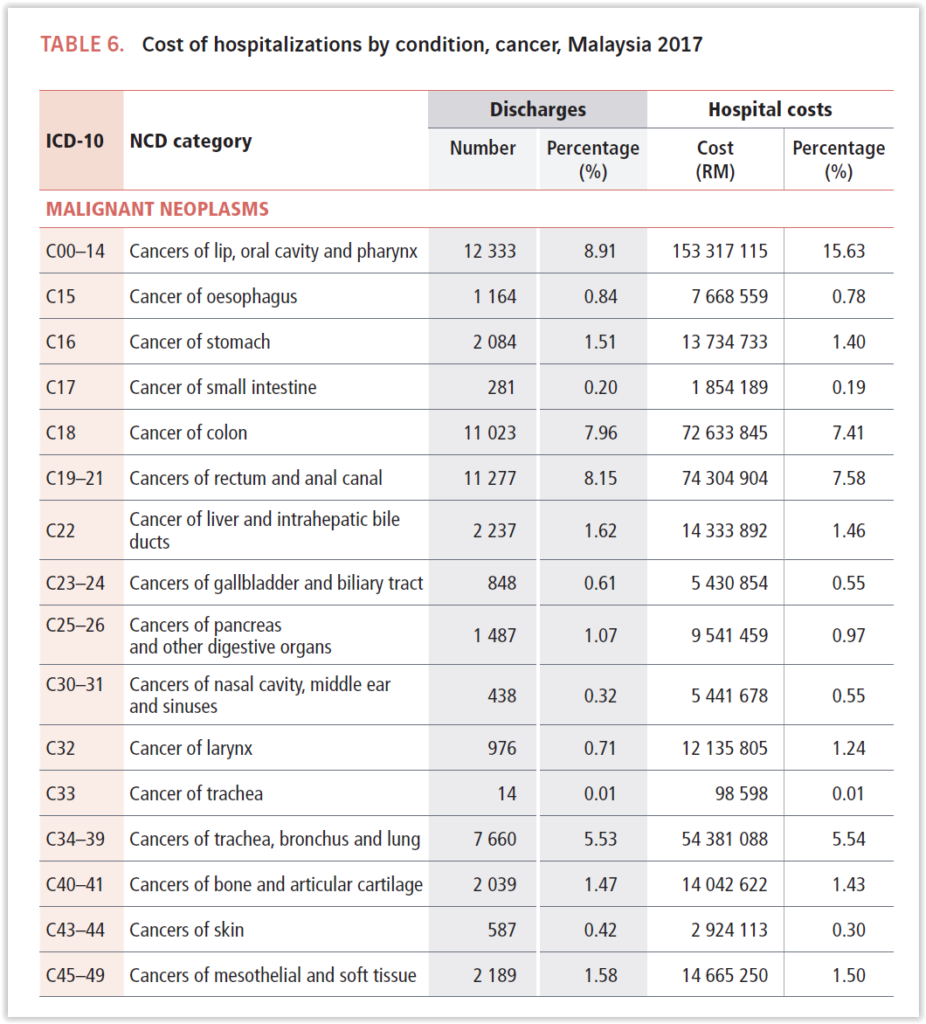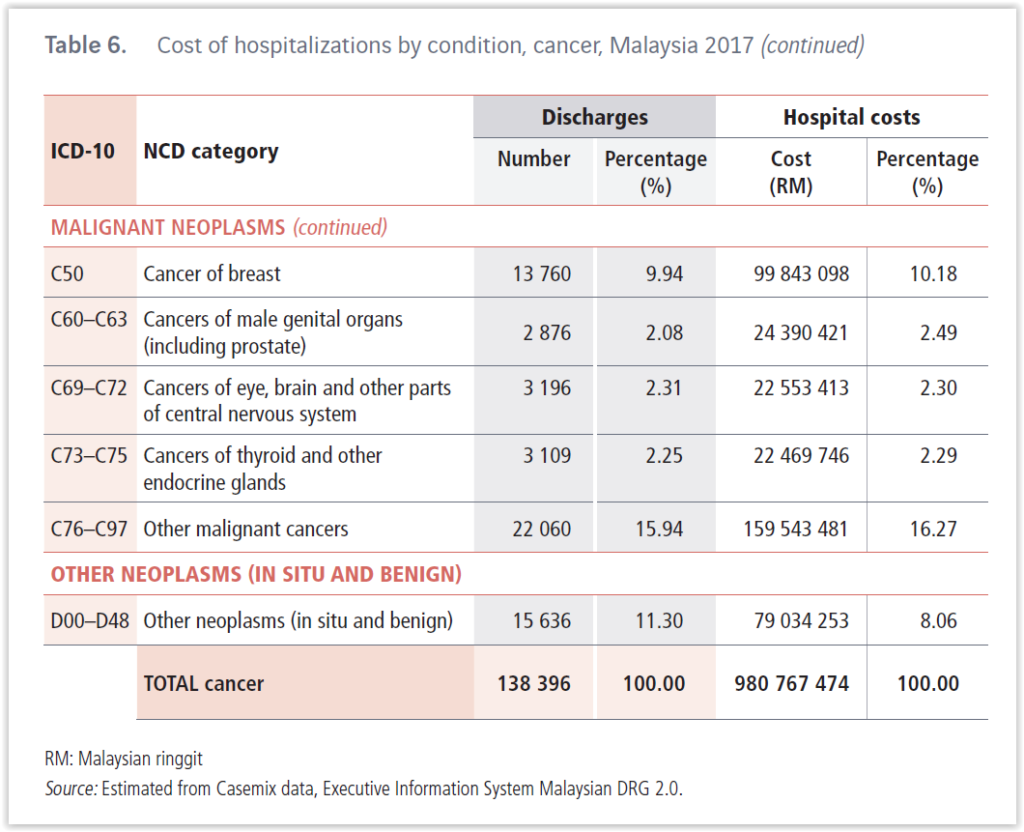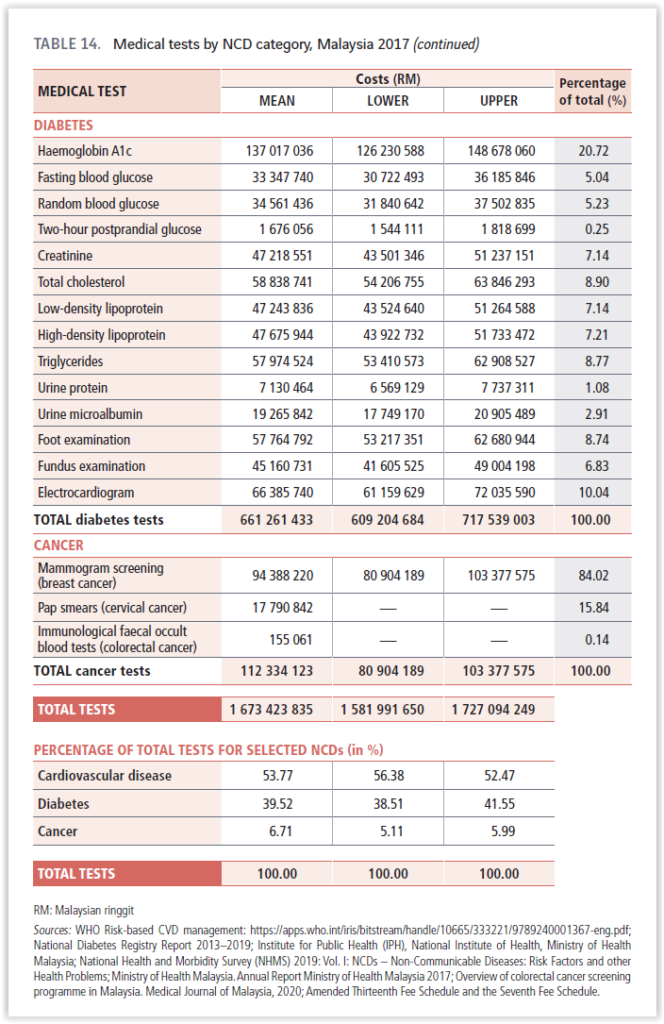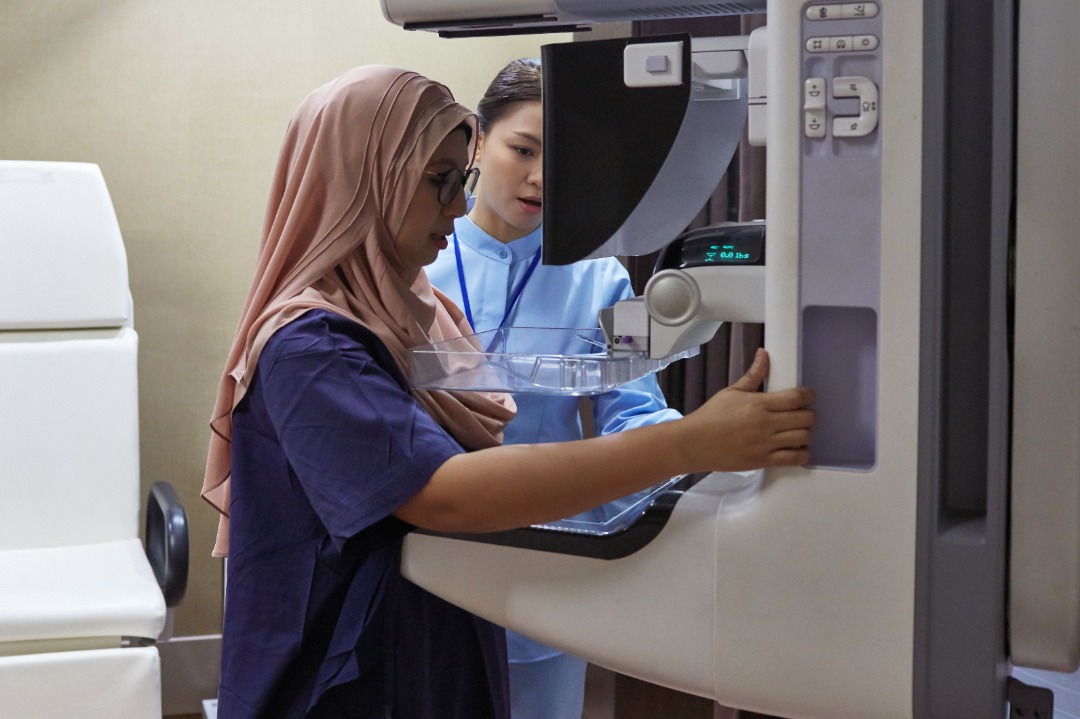KUALA LUMPUR, August 12 – The average cost of a hospital episode for cancer was RM7,087 in Malaysia in 2017, according to a new report by the Ministry of Health (MOH) and the World Health Organization (WHO).
The MOH-WHO study on the direct health care costs of three non-communicable diseases (NCDs) in Malaysia – cancer, cardiovascular disease (CVD), and diabetes – revealed that hospital expenditures on cancer across the public and private health care sectors totalled RM980.8 million in 2017.
The average RM7,087 cost per hospital episode for cancer across public and private hospitals was “considerably higher” than for diabetes (RM5,444) and CVD (RM5,374), according to the MOH-WHO report titled “The Direct Health-Care Cost of Noncommunicable Diseases in Malaysia” released Tuesday, based on 2017 data.
More than half of hospital discharges (53.24 per cent) related to six cancers: female genitalia (12.75 per cent), breast (9.94 per cent), nasopharynx (8.91 per cent), rectum (8.15 per cent), colon (7.96 per cent), and bronchus and lung (5.53 per cent).
These six cancer categories accounted for 56.27 per cent of hospitalisation expenditures on cancer, driven by longer length of stays for nasopharynx and breast cancer.
The year 2017 saw 138,396 hospital discharges for cancer, including for a minority of cases of in carcinoma situ and benign tumours. Carcinoma in situ refers to cancer in which abnormal cells have not spread beyond where they first formed, also known as stage 0 cancer, while benign tumours are an abnormal growth of cells that are not malignant tumours, which is cancer.


The highest cancer hospitalisation costs were spent on cancers of lip, oral cavity and pharynx at RM153.3 million (15.6 per cent); followed by breast at RM99.8 million (10.2 per cent); rectum and anal canal at RM74.3 million (7.6 per cent); colon at RM72.6 million (7.4 per cent); and trachea, bronchus and lung at RM54.4 million (5.5 per cent).
As for the number of hospital discharges, the highest was for breast at 13,760 discharges (9.9 per cent); followed by rectum and anal canal at 11,277 discharges (8.2 per cent); colon at 11,023 discharges (8 per cent); trachea, bronchus and lung at 7,660 discharges (5.5 per cent); and eye, brain and other parts of central nervous system at 3,196 discharges (2.3 per cent).
Hospital expenditure on other cancers totalled RM159.5 million (16.2 per cent), while discharges for this category amounted to 22,060, or 15.9 per cent.
On cancer as a whole, hospitalisations formed the biggest component of costs at 54.3 per cent, compared to medications (30.5 per cent), medical tests (8.4 per cent), and primary care and outpatient attendances (6.6 per cent), with the rest of costs comprising traditional and complementary medicine and health promotion.
Cancer Drug Spending Slightly Higher In Private Sector

The MOH-WHO cost study reported that spending on cancer drugs totalled RM408.1 million in 2017, accounting for nearly a quarter, or 24 per cent, of medications expenditures on all three categories of NCDs across cancer, CVD, and diabetes.
CVD topped medication spending at RM792.9 million, followed by diabetes at RM522.8 million, with cancer coming in the lowest at RM408.1 million.
Distribution between the public and private health care sectors on medications was more evenly distributed for cancer than CVD or diabetes, with the private sector accounting for 54.4 per cent and the public sector 45.6 per cent.
Cancer drug spending amounted to RM222 million in the private sector and RM186 million in the public sector.
Of the four types of cancer medications costed in the study, antineoplastic agents (chemotherapy drugs) comprised the highest spending at about RM101.3 million across public hospitals and clinics, and RM135.5 million across private hospitals, clinics, and pharmacies.
By facility, the largest expenditure on cancer drugs was spent in hospitals in both the public and private sectors.
Cancer medication expenditure in public hospitals at RM183.3 million exceeded that spent in private hospitals at RM153.3 million, although across facilities, spending on cancer drugs comprised about 46 per cent in public and 54 per cent in private.
Only 7% Took Mammograms, 26% Pap Smear Coverage

According to the MOH-WHO analysis, only 7 per cent of eligible women reported undergoing a mammogram in the past 12 months.
The report cited Malaysia’s Breast Health Awareness Programme that promotes annual clinical breast examinations on women aged 40 years and older, and mammograms to women above 50.
Primary care serves as the entry point for high-risk women before they are referred for a mammogram examination at a government hospital. Mammograms are offered to women over the age of 40 years every two years, and for high-risk women yearly.
The National Pap Smear Screening Programme offers opportunistic cervical cancer screening to all sexually active women aged 30 to 65 years. Pap smear screening is offered every three years, following two initial consecutive negative smears one year apart.
In 2017, the national pap smear coverage in Malaysia was only 26.3 per cent, or 532,127 cases.
Colorectal cancer screening, according to the MOH-WHO report, was implemented in 2014 among the asymptomatic population aged 50 to 70. The screening is carried out using the immunological faecal occult blood test (iFOBT), followed by colonoscopy.
A total of 32,464 people were screened in 2017.
Expenditure on cancer screenings formed just 6.7 per cent (RM112.3 million) of the total medical test costs of RM1.7 billion for three NCDs, compared to 53.8 per cent (RM899.8 million) for CVD tests and 39.5 per cent (RM661.3 million) for diabetes tests.
Of the total RM112.3 million spent on cancer screening, 84 per cent, or RM94.4 million, went to breast screening with mammograms, followed by cervical cancer screening via pap smears at 15.8 per cent (RM17.8 million). iFOBT spending amounted to about RM155,000.








